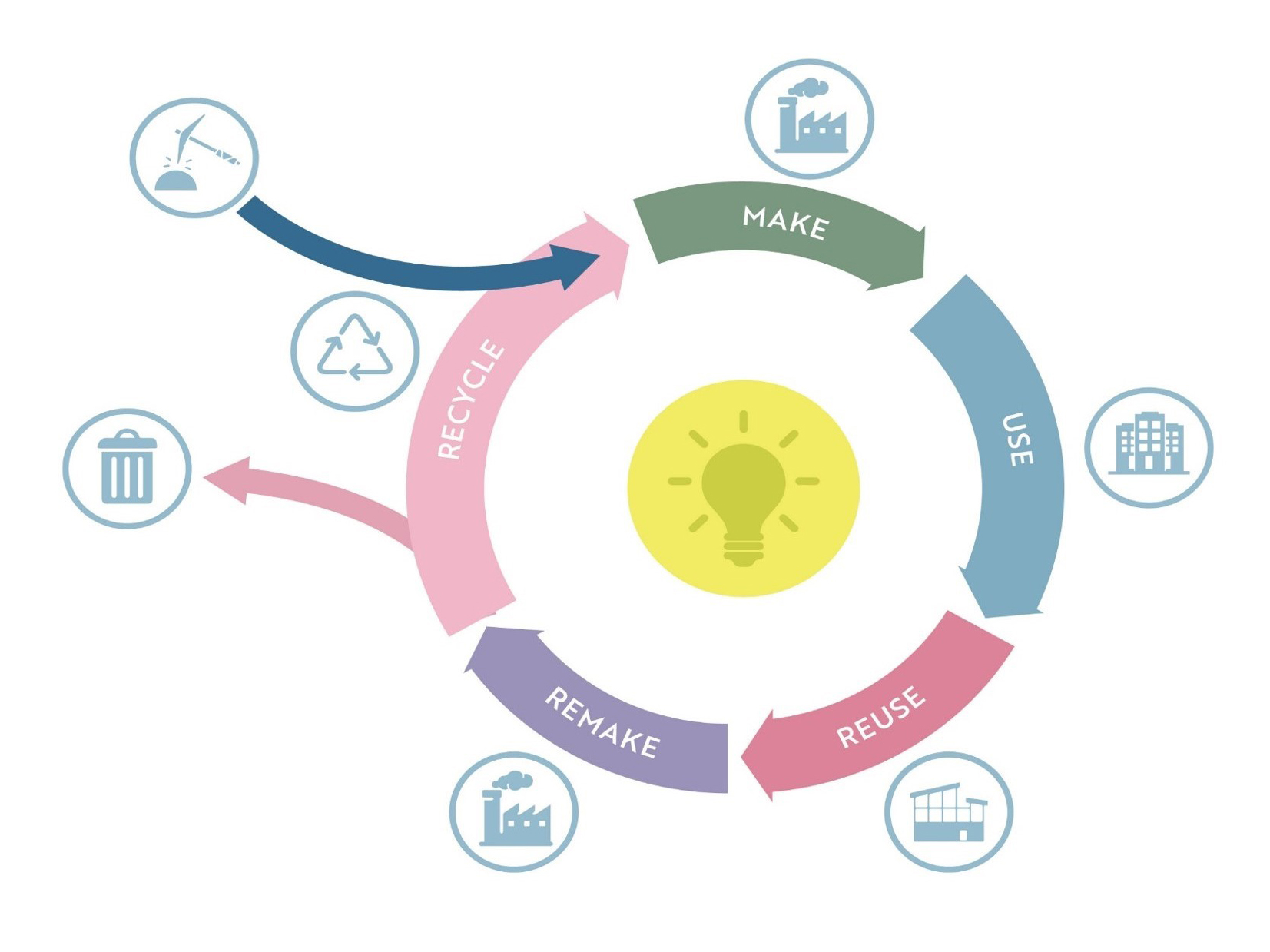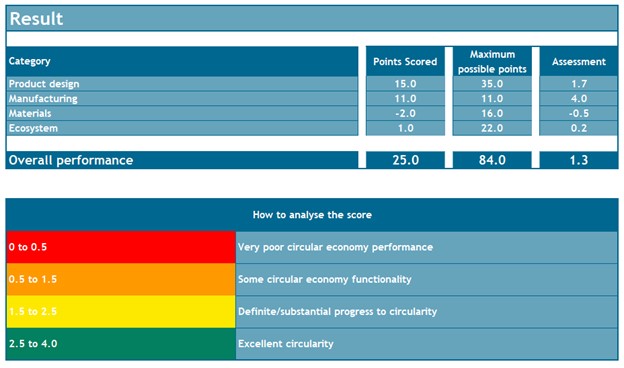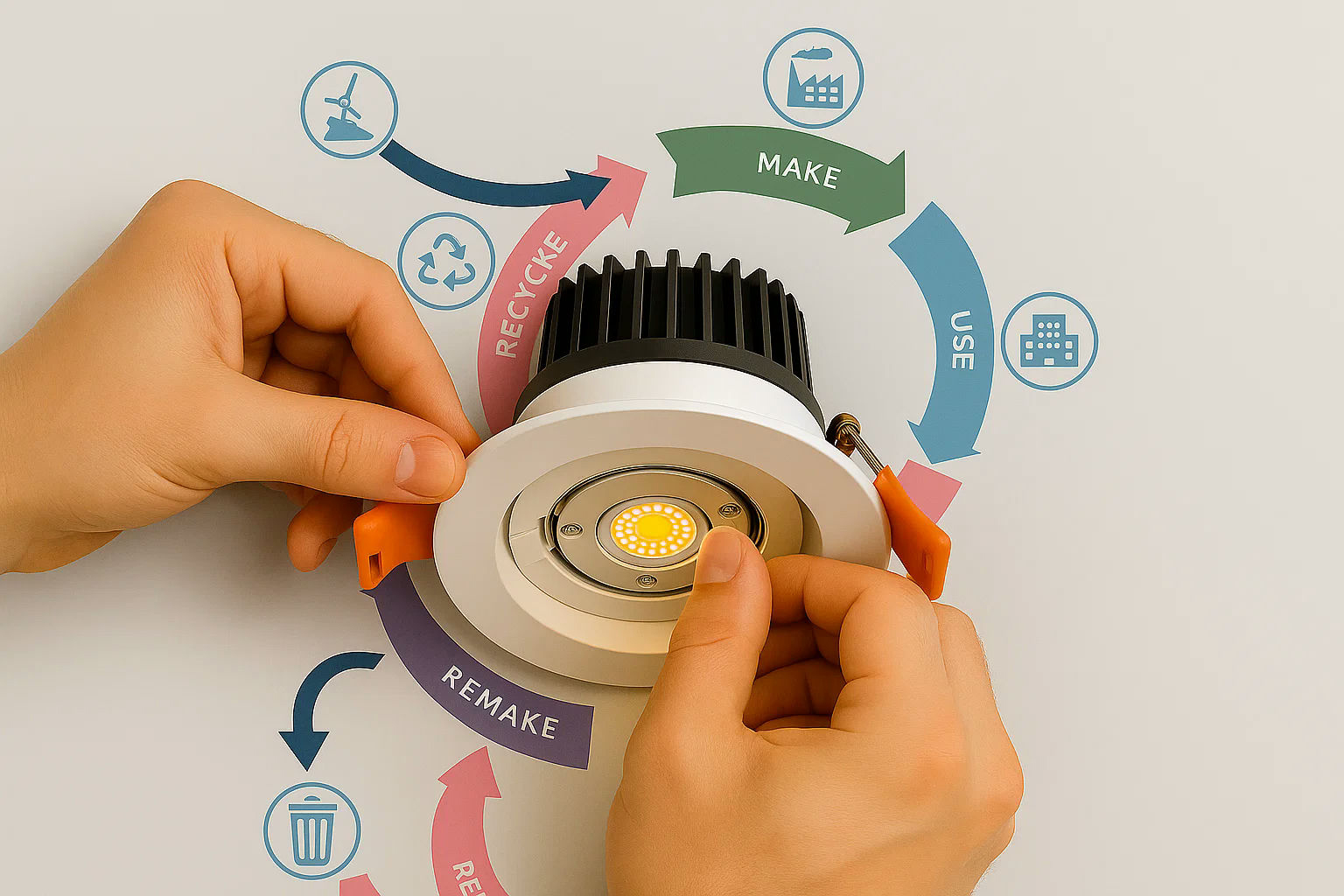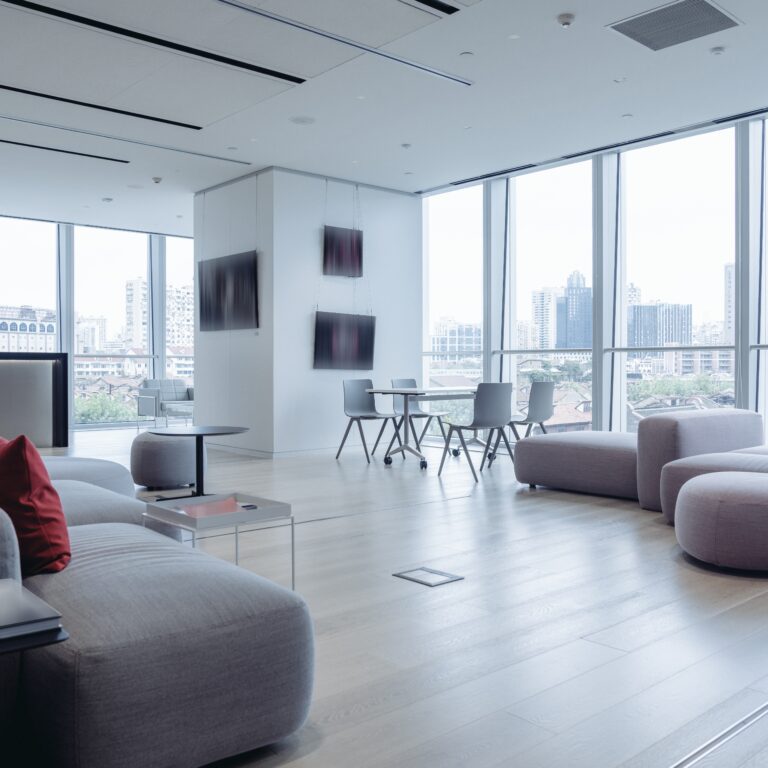Written by Paul Boken
Most people think of sustainable lighting in terms of energy efficiency. But in a world flooded with sealed fixtures destined for landfill, it’s time we looked deeper. For the lighting industry, the implications are clear: true sustainability can’t stop at energy efficiency; it must extend to the entire lifecycle of a luminaire, from design and materials to serviceability and end-of-life planning.
Enter TM66.
A bold and practical framework from CIBSE (Chartered Institution of Building Services Engineers), TM66 redefines what sustainable lighting should mean in a circular economy. This isn’t just about cutting watts; it’s about making lighting last – by design.
What Is TM66?
TM66 is a Technical Memorandum developed to help the lighting industry transition away from the traditional “take–make–dispose” model. Instead, it promotes a circular economy, where luminaires are designed for:
- Repair
- Reuse
- Upgrades
- Responsible Recycling

TM66 provides a roadmap for manufacturers to assess their products using a digital tool called CEAM-Make and CEAM-Specify. (Circular Economy Assessment Method). CEAM-Make scores a luminaire’s circularity based on everything from design intent to material sourcing, serviceability, and end-of-life planning. While the full Circular Economy Assessment Method – Make, allows a manufacturer to fully engage with the depth of detail required to create a fully circular economy-capable product, in its shorter version Specify – the four tabs provided in Make are collapsed into one; it is a triage tool for a designer, specifier or engineer, allowing the quick comparison of two or more products.
The diagram below is a results summary from the CEAM (Circular Economy Assessment Method) Make tool, which evaluates how circular a lighting product is using the TM66 framework. This example scores an overall circularity rating of 1.3, reflecting some circular economy functionality. While manufacturing performs strongly (4.0), the product falls short in materials (-0.5) and ecosystem engagement (0.2). Key areas for improvement include material selection and end-of-life strategies, while maintaining the robust manufacturing approach.

Why TM66 Matters
Lighting systems generate far more waste than most realize. Fixtures often end up in dumpsters not because they stop working—but because one component failed and couldn’t be replaced.
TM66 is a response to that waste. It encourages everyone in the lighting value chain to ask:
- Can this product be repaired or upgraded?
- Are its materials safe, sustainable, and traceable?
- Does the manufacturer have a plan for what happens at end-of-life?
It also raises the bar on transparency—encouraging manufacturers to document materials, avoid harmful substances, and disclose sustainability credentials like HPDs, EPDs, and Declare labels.
Specifying with Circularity in Mind
Circularity is becoming a key consideration for the consultants, architects, designers, and engineers engaged in lighting design scope across the built environment. TM66 provides practical criteria to evaluate whether a luminaire supports long-term sustainability:
- Fixtures that can be easily disassembled and reassembled
- Replaceable LED modules and drivers
- Use of standard fasteners (not adhesives)
- Manufacturer transparency through HPDs, EPDs, and Declare labels
- Participation in repair, reuse, or take-back schemes
With CEAM-Make scores now available from many manufacturers, these decisions are becoming easier to assess and justify.
What TM66 Is Teaching Us
TM66 isn’t just a checklist; it’s a cultural shift in the lighting industry. It challenges manufacturers to rethink product development. It empowers specifiers to demand better. And it offers a tangible, standards-based approach to climate responsibility. And perhaps most importantly—it helps keep luminaires in use, not in the bin.
Moving Forward with TM66
Sustainability in lighting is no longer just about reducing watts; it’s about designing with the foresight to choose materials that matter, create products that can evolve, and keep valuable components in circulation. TM66 equips the industry with a common language and set of tools to embrace this future. Whether you’re specifying luminaires, designing spaces, or manufacturing fixtures, now is the time to ask:
- Is this product built to last?
- Can it be serviced, not just replaced?
- What’s its circularity score?
At We Light, we’re excited to embrace the opportunity to apply TM66 in our lighting design projects. Sustainability is a core value of our team—because when we design lighting solutions that last, we’re creating lighting solutions that lead.




